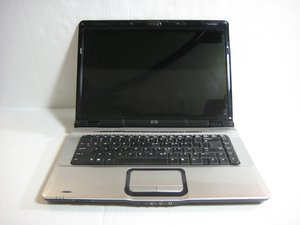This isn't as cut and dry as you think with yours. Since you have an AMD system, you get to deal with 3 conversion traps instead of 2 like owners of dead Intel systems. These 2007 DV Series systems are a known nightmare, but I also am thankful for the way HP handled them. If it wasn't for the lies and disregard directed towards users, I may have not gotten one of the leads I have for scrap hardware.
Basic testing before converting it
Before we get into conversion (and the pitfalls), swap the RAM and remove the hard drive(s). Sometimes this works, but I’ve usually seen it caused by a bad GPU rather then RAM or the hard drive. It may not hurt to remove the WiFi card as another troubleshooting measure, but these don’t fail at the same frequency. Not all of them die because of the GPU, but the majority do. Don’t be surprised when you find none of this helps.
If the Caps Lock isn't blinking, it isn't throwing error codes and the media controls are working correctly it's typically the GPU every time. However, it still doesn't hurt to try and isolate the easily replaced components from being at fault if the owner already gave up on it.
Conversion
Yes, the Intel GMA board is not affected and won’t die because of this issue. However, these boards require a Intel UMA heatsink (as HP refers to it) in order to do the Intel retrofit on dead nVidia systems. In your case it's not a matter of throwing a board at it - you need a processor, motherboard AND heatsink since you’re working with a AMD base. I will explain more on this in the next section of this answer.
Since you have a dead AMD system, you will need to find a Socket M Core 2 Duo, the Intel UMA motherboard and the corresponding heatsink. You are basically going to be rebuilding it from scratch with the amount of required parts and time involved.
I usually tell owners to pull their data off and dump the laptops if they don’t need it to avoid the problem of ending up in a bad situation to begin with if it happens at the worst possible time. I do this because they will all die with enough use and time. In addition, these systems are 11+ years old and the ones that still somehow work WILL die if it hasn’t happened in the early years of the machine’s life - which is when most of them died (thankfully).
Since they have such a bad reputation, the systems are so cheap on the used market tend to cost as much as the a single major part that can’t be carried to a modern system - which is the biggest negative striking any possibility of repair down. The most economical end to these laptops is to strip it for parts if it’s dead or use it in a environment it can die without any issues until it happens and then strip what remains for parts.


 4
4  2
2 
 144
144